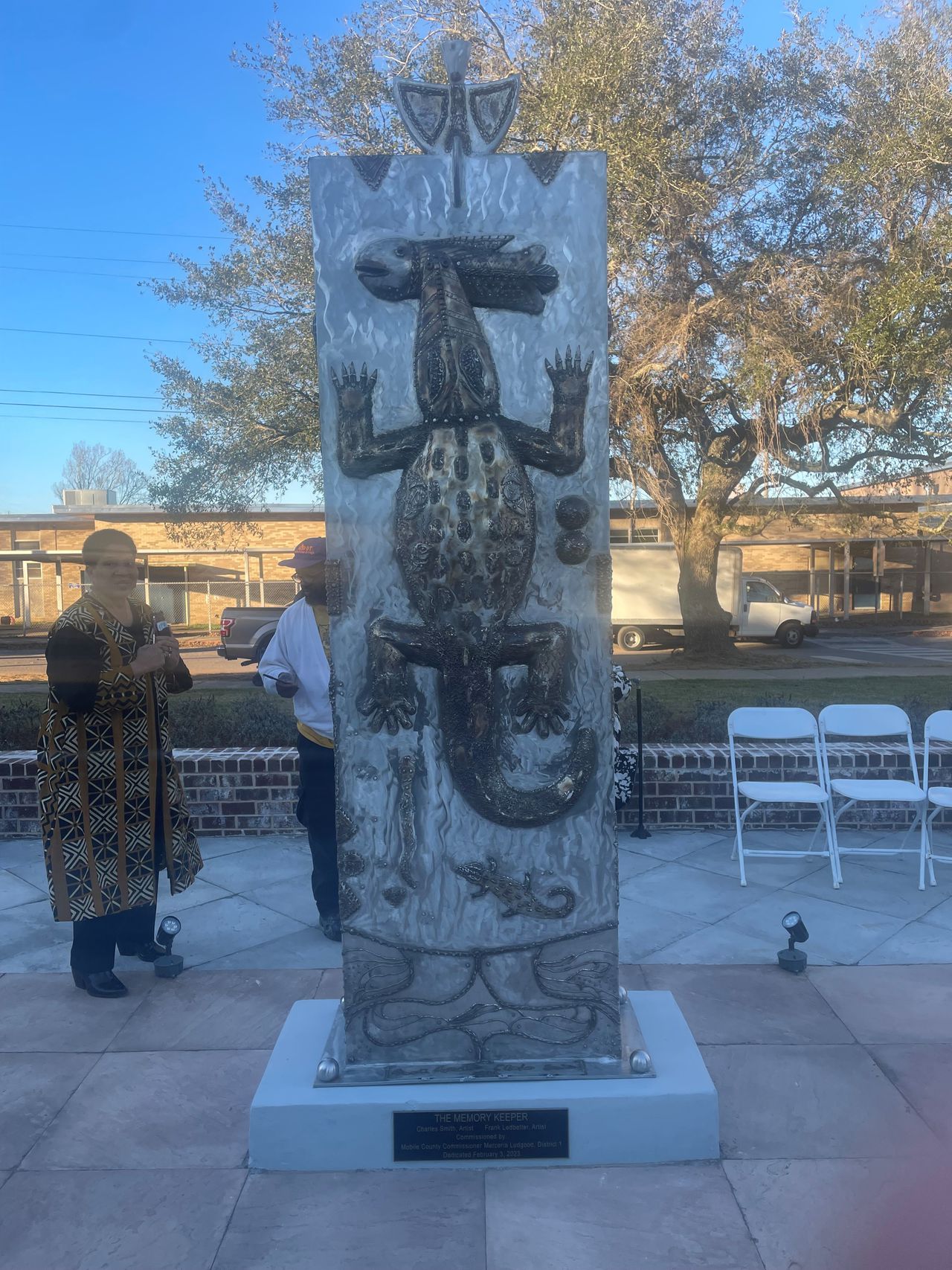Guest opinion: We are memory keepers
This is a guest opinion column
The Memory Keeper, a newly unveiled sculpture at the Heritage House, is a brilliant work of art – and its name holds tremendous significance.
Before its unveiling, I wasn’t familiar with the term “Memory Keeper”. But to fully appreciate The Memory Keeper, you must understand the role and responsibilities of a memory keeper.
So like many, I Googled “Memory Keeper.”
One of the first results was the description of a memory keeper as a caregiver to help people with dementia re-live and recall memories. I immediately wondered whether the artists Charles Smith and Frank Ledbetter were being humorous – were they implying that America had dementia? Was America having a hard time recalling basic historical facts? Perhaps humorous but provocative given the times we are living in – when Black history is being challenged and Black history is being rewritten.
Basic Black historical facts are being questioned. Critical Race Theory has become the center of educational debates. Florida’s Department of Education has rejected an Advanced Placement Course covering African American Studies. Just this week, 300 Tuscaloosa, Alabama students protested claiming that an administrator said their Black History Month event shouldn’t mention figures before 1970 students. Black history is being lost.
Was the idea of the Memory Keeper to serve as a caregiver for America’s memory loss problem? Was the Memory Keeper’s purpose to never let the world forget the 110 souls that came to Mobile, Alabama via the Trans-Atlantic slave trade?
I continued to dig for other meanings and purposes of a memory keeper. Surely Charles and Frank weren’t implying America had dementia. I continued my research, focusing on the role and responsibilities of what is known as a family memory keeper.
A family memory keeper is a family member who tracks the activities and histories of the family. They keep, organize and protect the memories and milestones through journals, photos, videos, keepsakes, and stories. Surely this was the intent in naming The Memory Keeper.
While meditating on the thought of a family memory keeper, I thought about the descendants of the 110. I think about Bill Green, Ted Keeby, Shelisa Keeby, Clarence Wall Jr, and how they speak about their ancestors Osia and Innie Keeby, two enslaved Africans aboard Clotilda. They are memory keepers for their ancestors.
I remember conversations with Cassandra Wallace, Altevese Rosario, and Gary Lumbers about Cudjo Lewis. They are memory keepers. I think about Delisha Marshal and how she talks about Peter Lee “Gumpa” and Josephine Lee. She is a memory keeper. I remember listening to Ms. Lorna Woods, Joycelyn Davis and Angela Davis talk about Charlie and Maggie Lewis. They are memory keepers.
I remember conversations with Mom Bea, Ronald Ellis, and Ms. Vernetta Henson about Pollee and Rose Allen. I recall the stories that Johnny Crear shared about Matilda McCrear. He is a memory keeper. I remember Ms. Pat Frazier and Bobby Dennison’s stories about Lottie Dennison. They are memory keepers.
Now it’s more important than ever to remember our ancestors’ memories given the current events. While we honor the dedication and the accomplishments of The Memory Keeper’s artists, I hope the name the sculpture bears provoke the same kinds of memories. We must always remember the 110 enslaved Africans aboard Clotilda and their strength, courage, resilience, and perseverance.
So, when you visit the Heritage House and look at The Memory Keeper, I challenge you to think of the 110 survivors of that inhumane voyage. Reflect on each and every family, where they came from, and their rich history.
And to all the descendants that tell the story of the 110, remember that we are family memory keepers. We are the protectors of this history, we are the protectors of their story, and we are responsible for never letting the world forget.
Jeremy Ellis is a sixth generation descendant of Pollee Allen and Rose Allen who were both enslaved Africans on the Clotilda – the last known slave ship to bring enslaved Africans to America.
